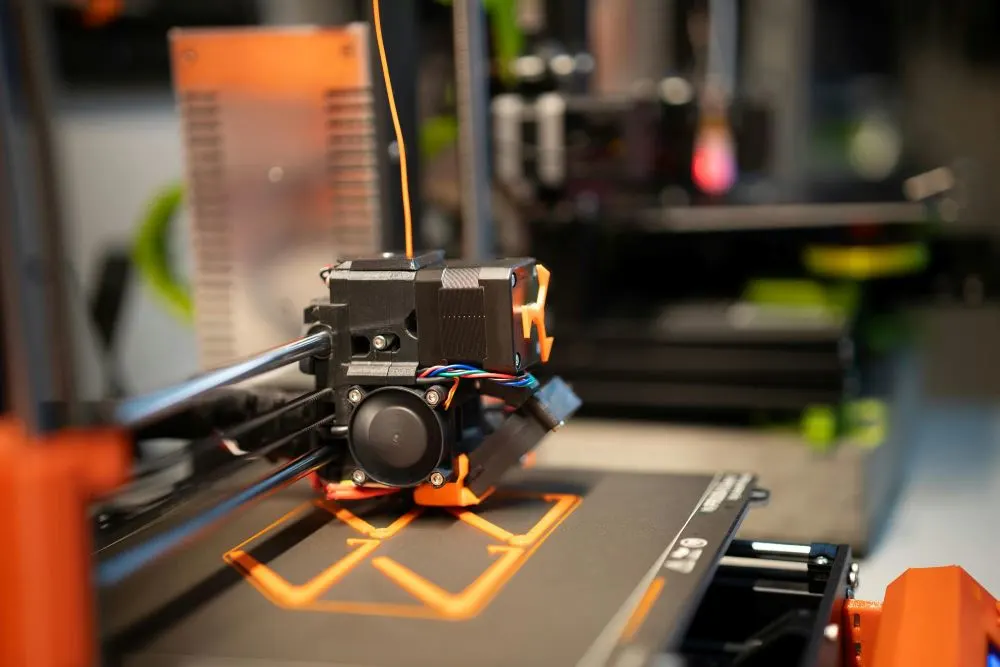In the realm of 3D printing, few materials are as widely used and versatile as PLA filament. Short for Polylactic Acid, PLA filament is a biodegradable thermoplastic derived from renewable resources like corn starch and sugarcane. Its popularity in the PLA 3D printer community stems from its ease of use, environmentally friendly properties, and suitability for a wide range of applications. This article explores the characteristics of PLA filament, its benefits, and its role in the advancement of PLA 3D printer technology.
What is PLA Filament?
PLA filament is a type of plastic commonly used in 3D printing. It is known for its biodegradability, making it an eco-friendly alternative to traditional petroleum-based plastics. PLA filament is produced through a process of fermenting plant-based sugars to create lactic acid, which is then polymerized to form polylactic acid. This filament is available in a variety of colors and diameters, with 1.75mm and 2.85mm being the most common sizes.
Characteristics of PLA Filament
PLA filament possesses several key characteristics that make it a favorite among 3D printing enthusiasts:
- Ease of Printing: PLA filament is known for its low melting temperature, typically between 180-220°C. This makes it easier to print with compared to other filaments, such as ABS, which require higher temperatures.
- Minimal Warping: One of the significant advantages of PLA filament is its low tendency to warp. This property allows for reliable printing without the need for a heated bed, making it ideal for beginners.
- Smooth Finish: Prints made with PLA filament tend to have a smooth surface finish and good detail resolution, making it suitable for creating intricate designs and prototypes.
- Biodegradability: Being derived from renewable resources, PLA filament is biodegradable under industrial composting conditions. This reduces its environmental impact compared to non-biodegradable plastics.
- Variety of Colors and Blends: PLA filament is available in a vast array of colors and can be blended with other materials to achieve different effects, such as wood or metal-like finishes.
Benefits of Using PLA Filament
The use of PLA filament in PLA 3D printer technology offers numerous benefits:
- Environmentally Friendly: PLA is made from renewable resources and is biodegradable, making it a more sustainable option for 3D printing. Its production generates fewer greenhouse gases compared to petroleum-based plastics.
- Safety: PLA filament emits fewer harmful fumes when heated, making it safer for indoor use. This is particularly important in educational settings and home environments where ventilation may be limited.
- Versatility: PLA filament can be used in a variety of applications, from educational projects and prototypes to decorative items and functional parts. Its versatility makes it a go-to choice for many 3D printing tasks.
- Accessibility: Due to its ease of use and reliability, PLA filament is widely recommended for beginners. It is compatible with most 3D printers and does not require advanced settings or equipment.
Applications of PLA Filament in PLA 3D Printers
PLA filament is used in a wide range of applications, showcasing its versatility and practicality:
- Prototyping: Engineers and designers use PLA filament to create prototypes quickly and cost-effectively. The smooth finish and dimensional accuracy of PLA prints are ideal for testing form and function.
- Educational Projects: PLA filament is a popular choice in educational settings due to its safety and ease of use. Students can learn about 3D printing and create models, tools, and educational aids.
- Art and Design: Artists and designers appreciate the wide range of colors and finishes available with PLA filament. It allows for the creation of detailed sculptures, jewelry, and other artistic pieces.
- Functional Parts: While PLA may not have the high strength and heat resistance of some other materials, it is still suitable for many functional parts that do not require extreme durability or temperature tolerance.
- Decorative Items: From home decor to custom gifts, PLA filament is perfect for creating aesthetically pleasing items. Its smooth finish and ability to hold vibrant colors make it ideal for decorative purposes.
Advancements in PLA Filament and PLA 3D Printer Technology
As the 3D printing industry continues to evolve, so too does the technology behind PLA filament and PLA 3D printers:
- Enhanced Formulations: Researchers and manufacturers are constantly developing new PLA formulations that improve its mechanical properties, making it stronger and more heat resistant.
- Composite Filaments: Innovations in PLA filament include blends with other materials like wood, metal, and carbon fiber, expanding the range of textures and finishes achievable with PLA 3D printers.
- High-Precision Printers: Advances in PLA 3D printer technology are leading to machines capable of higher precision and faster print speeds, allowing for more complex and detailed PLA prints.
Conclusion
PLA filament remains a cornerstone of the 3D printing world, offering a combination of ease of use, environmental benefits, and versatility. Its compatibility with PLA 3D printers makes it accessible to a wide range of users, from hobbyists and students to professional designers and engineers. As technology advances, the capabilities and applications of PLA filament continue to expand, solidifying its place as a key material in the future of 3D printing..
Keep an eye for more news & updates on Gossips!




